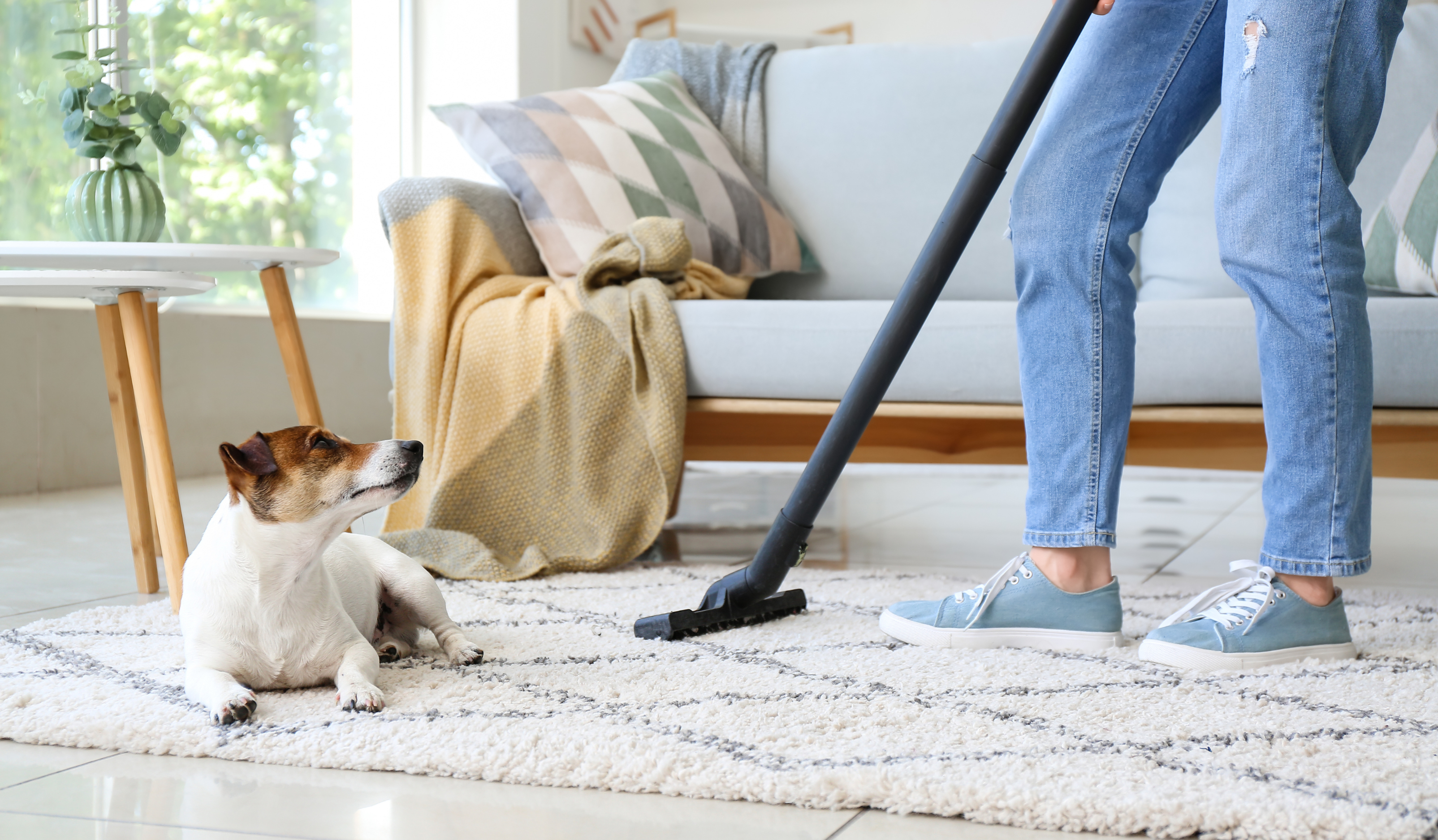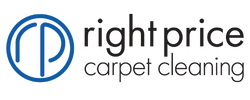Carpeted floors add warmth, comfort, and style to any space, but they also serve as hidden reservoirs for allergens. Dust mites, mold spores, pollen, pet dander, and microscopic debris often collect deep within carpet fibers, far below what a regular vacuum can reach. For individuals with allergy sensitivities or asthma, this trapped buildup can worsen indoor air quality and trigger persistent symptoms, from nasal congestion to itchy eyes and difficulty breathing.
The best carpet cleaning method for allergies is steam cleaning, as it uses high heat and deep extraction to eliminate allergens from carpet fibers.
Identifying the best carpet cleaning method for allergies is key to reducing exposure and improving day-to-day comfort at home. Some cleaning techniques only touch the surface, while others are designed to reach deep layers where allergens thrive. Choosing the right approach means evaluating how effectively it removes irritants, the level of penetration it offers, and how well it supports long-term prevention. Steam cleaning is consistently regarded as the gold standard, but a layered approach is usually the most effective strategy for keeping carpets and indoor air fresh and allergy-friendly.
Why Carpet Cleaning Matters for Allergy Control

One of the most overlooked contributors to indoor allergies is the flooring under our feet. With each step, movement, or gust of air, allergens hidden in carpet fibers can become airborne, exacerbating respiratory issues.
Deep cleaning isn’t just about hygiene—it’s about eliminating triggers that directly affect your health. Carpets that aren’t properly maintained can trap moisture and dust, creating ideal conditions for mold and mites. Routine, targeted carpet cleaning reduces the burden on your immune system and helps stabilize the air quality inside your home. Especially in households with pets, children, or chronic allergy sufferers, proactive cleaning can make a noticeable difference in day-to-day wellness.
Most Effective Carpet Cleaning Method for Allergies

Steam Cleaning (Hot Water Extraction)
Among all available methods, steam cleaning offers the most thorough removal of allergens. It delivers high-pressure, high-temperature water deep into carpet fibers, followed by immediate extraction, leaving the carpet cleaner and drier.
This process not only flushes out embedded debris, but also sanitizes the carpet by destroying microscopic organisms at the source. Steam cleaning is especially beneficial for households with children or allergy-prone individuals, as it avoids harsh chemicals while delivering powerful results. In addition to improving air quality, it also prolongs the life of the carpet by removing abrasive dirt that can damage fibers over time. For optimal results, we recommend steam cleaning carpets professionally every 6 to 12 months.
Dry Carpet Cleaning
Dry carpet cleaning uses minimal moisture and relies on absorbent compounds to attract and remove dirt. The solution is spread across the carpet, agitated into the fibers, and then vacuumed up with specialized equipment.
While it’s a convenient option, especially for commercial or high-traffic areas that require quick turnaround, it doesn’t achieve the same deep clean as steam. Dry cleaning is best suited for surface refreshes or maintenance between more intensive cleanings. For allergy sufferers, it may offer short-term visual improvement, but it lacks the microbial removal power necessary to truly alleviate symptoms. If used, it should be part of a broader allergy management plan rather than a standalone solution.
Shampooing and Bonnet Cleaning
These older methods still appear in some residential and commercial settings due to their fast application, but their results are often superficial. They typically use rotary brushes or pads combined with foaming detergents to scrub the carpet’s surface.
Unfortunately, shampooing can leave behind sticky residues that attract more dirt, while bonnet cleaning merely skims the upper layer of fibers. Over time, this can actually make allergies worse by trapping irritants closer to the surface. Neither method provides the deep sanitation needed for serious allergen control. They may help with cosmetic issues or spot cleaning, but they’re not well-suited for maintaining a healthy, allergy-conscious environment.
List of Common Allergens Found in Carpets

Carpets collect a wide range of allergens that build up gradually and remain largely invisible. Knowing what’s beneath your feet helps you understand the importance of targeted cleaning. These hidden particles are often embedded deep within the fibers, creating ongoing exposure even in homes that appear spotless.
Dust Mites
Thriving in warm and humid areas, dust mites feed on human skin flakes and are one of the most common triggers of allergic reactions indoors. These microscopic pests settle deep in carpet fibers, especially in bedrooms and under furniture. Their waste particles are highly allergenic and can become airborne with minimal disturbance, leading to chronic respiratory irritation if left unaddressed.
Pet Dander
Even without pets currently in the home, dander can linger from past tenants, visitors, or shared spaces. It sticks to fibers and floats into the air easily, causing sneezing, itchy eyes, and in some cases, skin irritation. Because it’s microscopic and lightweight, pet dander is extremely difficult to remove without thorough deep cleaning, especially in plush or high-pile carpets.
Pollen
Often carried inside by shoes, pets, or open windows, pollen becomes embedded in carpet during allergy season and remains well after it ends. It’s a key contributor to seasonal allergies, even in homes far from rural or plant-heavy areas. Once it settles in the fibers, it can recirculate into the air and continue affecting allergy sufferers long after outdoor pollen counts drop.
Mold Spores
Where there’s dampness, mold may follow. Wet carpets or poor ventilation can foster hidden mold growth beneath the surface, which can trigger respiratory issues and spread quickly if left untreated. Mold spores are particularly dangerous for people with asthma or immune system sensitivities, and they often go unnoticed until they cause a strong musty odor or visible staining.
Bacteria and VOCs
Bacteria from outside, pet paws, or spills can build up in carpet, especially in high-traffic zones. Additionally, many carpets release volatile organic compounds (VOCs) over time, which can irritate lungs and contribute to indoor pollution. Prolonged exposure to these compounds—often found in adhesives, padding, or synthetic fibers—can lead to headaches, fatigue, and worsening of allergy symptoms.
Other Ways to Minimize Allergens in Carpets
Reducing allergens in the home goes beyond periodic deep cleaning. Adopting smart habits and using the right tools can significantly lower the overall allergen load indoors. Consistency in these small practices builds a healthier, more breathable environment over time.
Vacuum Frequently with a HEPA Filter
A HEPA-equipped vacuum can capture tiny particles that traditional vacuums miss or redistribute. Make it a habit to vacuum at least twice a week, and more often if you have pets, open windows, or high foot traffic. Regular vacuuming also helps prevent allergens from settling too deeply into the carpet, where they become harder to remove.
Use Hypoallergenic Carpet Materials
The type of carpet you choose matters. Short-pile or natural fiber carpets tend to hold fewer allergens than thicker or synthetic ones. Additionally, carpets labeled low-VOC reduce chemical off-gassing that can aggravate allergy and asthma symptoms, especially in children.
Control Indoor Humidity
Keeping indoor humidity in check reduces the likelihood of mold and mite activity. Use dehumidifiers during humid months or in damp-prone rooms, and always dry spills immediately to prevent long-term moisture buildup. Monitoring humidity levels with a hygrometer can help you stay within the ideal 30–50% range for allergy control.
Remove Shoes at the Door
Implementing a no-shoes policy keeps outdoor irritants like pollen, dirt, and bacteria from entering your home. A simple mat or shoe rack near the entrance makes it easy to build this habit into your routine. It’s a low-effort change that significantly reduces what gets ground into your carpet over time.
Best Practices After Cleaning to Maintain Allergen Control
A deep clean significantly reduces allergens, but maintaining those results requires thoughtful follow-up. Post-cleaning practices play a critical role in keeping your carpets allergen-free, especially in homes with pets, children, or individuals with respiratory sensitivities.
- Keep windows closed during high-pollen days to prevent outdoor allergens from settling into freshly cleaned fibers. Even a short breeze can carry fine particles like pollen or dust, quickly undoing the effects of a professional steam cleaning.
- Change HVAC and air purifier filters shortly after carpet cleaning to capture airborne debris stirred up during the process. Many allergens become airborne when carpets are agitated, so replacing filters helps remove lingering particles before they recirculate throughout your home
- Rotate furniture at least every few months to expose hidden areas of carpet that might be missed during regular cleaning. These untouched zones can collect dust, mites, and debris over time, becoming silent hotspots for allergens.
- Avoid chemical sprays, artificial deodorizers, or heavily scented products unless they’re labeled safe for allergy-sensitive homes. Many standard products release volatile organic compounds (VOCs) that can irritate the lungs and cause symptoms to return, even on a freshly cleaned carpet.
- Place washable mats in high-traffic areas and ask guests to remove shoes at the door. This simple step keeps allergens from being reintroduced into your carpet and preserves the clean, safe foundation you’ve worked hard to create.
By combining cleaning with consistent maintenance, you ensure a healthier environment between professional services—and reduce the frequency with which deep cleans are required.
Can Replacing Carpet Help with Allergies?
Even the most effective cleaning strategies can’t fully resolve issues tied to the age or material of your carpet. When allergens become deeply embedded or the carpet holds moisture and odors that won’t go away, replacement may be the most effective option for long-term relief.
Older carpets—especially those with visible wear, discoloration, or persistent odors—tend to trap years of dust, dander, and moisture. In such cases, routine cleaning may only offer short-term improvement. Replacing carpet with low-pile or tightly woven options made from natural materials like wool, jute, or sisal can significantly reduce allergen retention. These fibers breathe better, resist moisture, and are easier to maintain with regular vacuuming and steam cleaning.
In homes where allergies are severe or persistent, transitioning to hard flooring such as wood, tile, or vinyl in sensitive areas like bedrooms may offer the best results. These surfaces are nonporous and easy to wipe clean, limiting allergen accumulation over time.
If full replacement isn’t feasible, upgrading the carpet underlay can still make a meaningful difference. Choose padding that offers moisture barriers, antimicrobial protection, or odor resistance to help control mold and bacteria buildup from below. This added layer can extend the life of your carpet while making it safer for allergy-prone occupants.
Taking this step is especially helpful in flood-prone homes or properties with recurring indoor humidity issues. While not every home requires replacement, knowing when to consider it can prevent chronic symptoms and support long-term air quality improvements.
When to Call a Professional Carpet Cleaner

Persistent allergy symptoms, musty odors, or carpets that still feel damp after cleaning are often signs it’s time to bring in professional help. These issues may point to deeper problems beneath the surface—areas household tools can’t fully address.
At Right Price Carpet Cleaning, we provide expert carpet, rug, mattress, upholstery cleaning, and others, using methods designed to target built-up grime and allergens without compromising the integrity of your surfaces. If you’re dealing with paint on carpet, pet messes, or trying to get pee out of a mattress, our experienced team brings the knowledge and tools needed to treat even the most stubborn issues.
We also offer tile and grout cleaning, support NDIS carpet cleaning clients, and keep our prices fair and transparent. All our services are allergy-conscious, safe for your home, and carried out with care to promote cleaner, more comfortable living spaces.
When home remedies and store-bought tools fall short, a professional clean can give your space the refresh it deserves. Contact us to learn more or book a service with a team trusted by households and businesses across the area.





Recent Comments